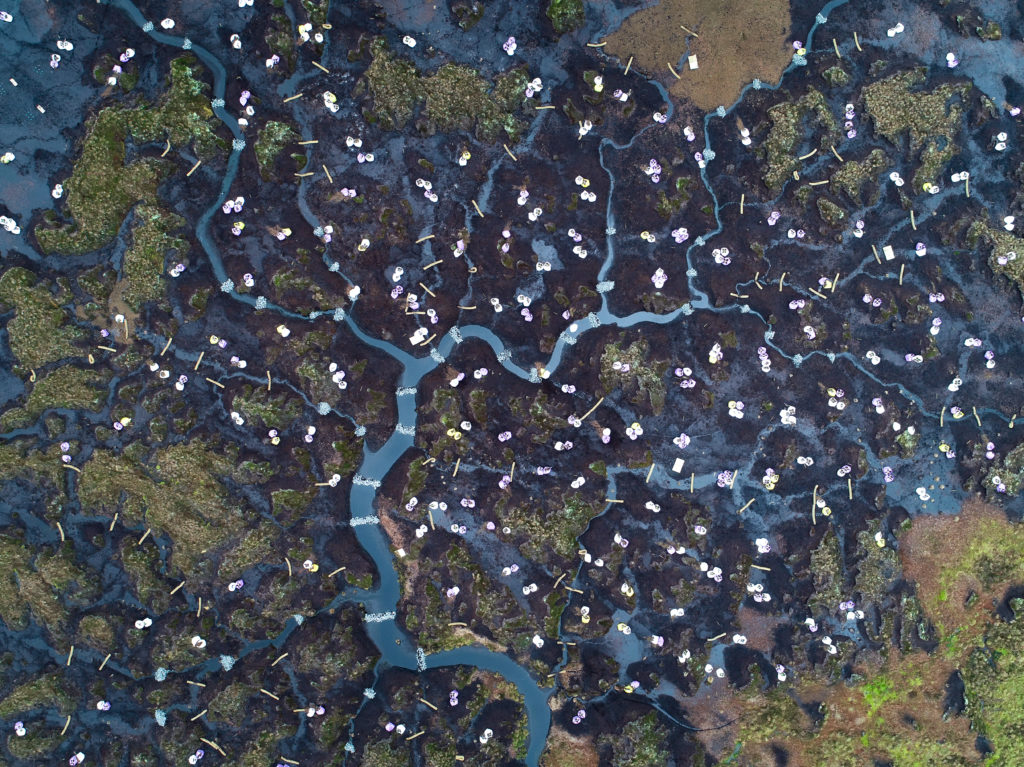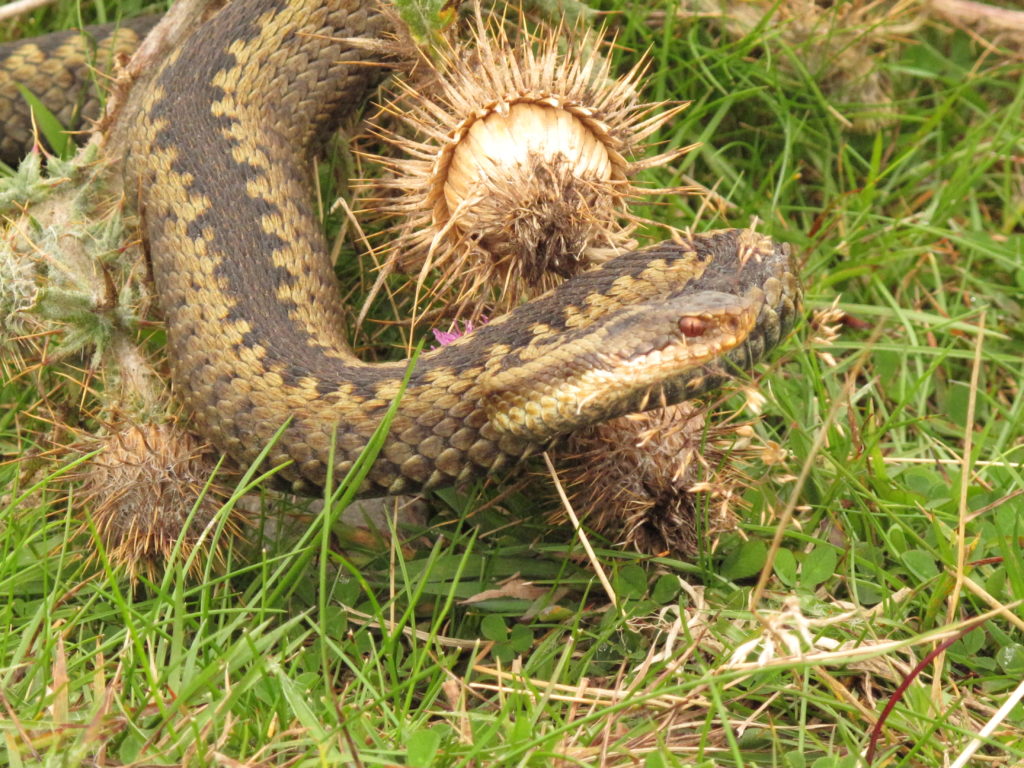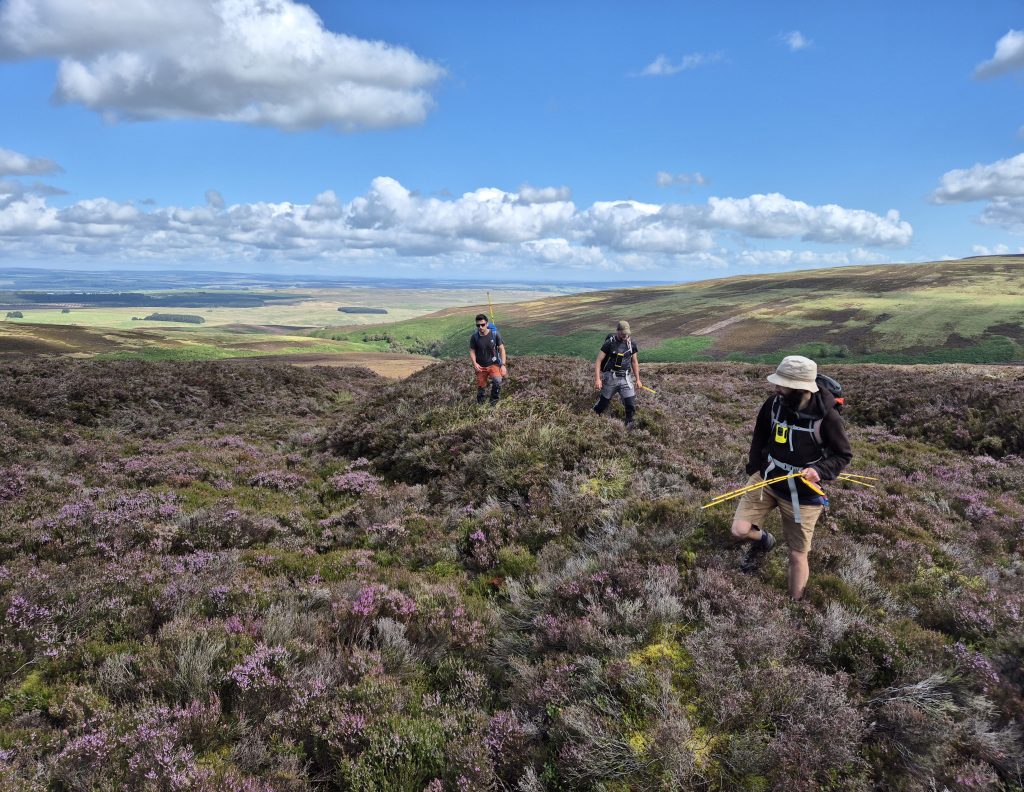Blog
Geopark at home 2
5 December 2024
Geopark at home
Activity 2 – crafty crinoids
Download a printable version of these instructions here.
Crinoids are sea creatures whose fossils are very common in the North Pennines. Here’s how to make your own.
You will need:
- A pipe cleaner (or other wire)
- Beads (or other hoops such as breakfast cereal)
- Short pieces of thread or wool
- Scissors
What to do:
Cut 3 short pieces off the end of your pipe cleaner. Wrap the end of the long piece around the middle of the 3 short pieces to join them all together. Fold one of the short pieces in half and wrap its ends together, then spread all the ends out to form a 5-pointed star. These are the arms of the crinoid. Thread beads onto the long piece. This is the stem of the crinoid.
Tie (or glue) some pieces of thread or wool to the arms. These threads are called pinnules. If you are using wool you might want to separate out the strands to make the pinnules more feathery. To make your crinoid stand up, you could stick the end of the stem to a piece of card or into a lump of plasticine to be the sea floor.




What’s going on?
Crinoids have existed for about 480 million years. The kinds that have stems anchor themselves on the sea floor and their arms wave around in the water to catch tiny things floating past that they can eat. Most crinoids that are alive today don’t have stems. Crinoids have 5 arms like their relatives the starfish, but they often split into 2 branches to make 10 arms in total.
Crinoids are made up of lots of hard plates, which can sometimes get preserved as fossils. From around 360 to 300 million years ago, what is now the North Pennines was on the edge of a tropical sea near the equator. This warm, shallow sea had lots of creatures living in it, like corals and crinoids, and when they died the hard parts of their bodies became part of the mud on the sea floor. As this mud was squashed and buried over time it formed a rock called limestone. There are several layers of limestone in the North Pennines from this time, and some of them contain lots of crinoid fossils.
When we find fossil crinoids, the thinner parts like the pinnules don’t usually survive. The stems often break into pieces like the beads on your model so you might see little rings like O shapes in the rock.

Take it further:
- Make a few more crinoids and stick them to your sea floor. Lots of fossils found together are called an assemblage.
- You could find pictures of other creatures that formed fossils around the same time as the crinoids and make some to add to your sea floor assemblage. Brachiopods, corals and goniatites are good examples.
- What else could live in a tropical sea? Have a go at inventing your own imaginary creatures.
Share your pictures or comments on Facebook or Twitter, and let us know if you enjoyed this Geopark at home activity.
Facebook: https://www.facebook.com/NorthPenninesAONB
Twitter: https://www.twitter.com/NorthPennAONB














